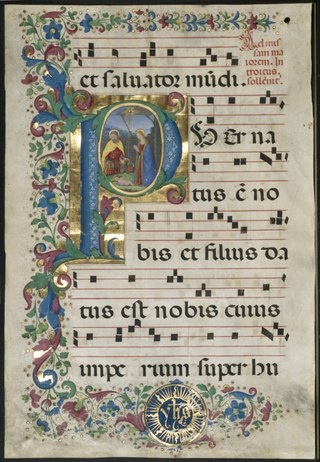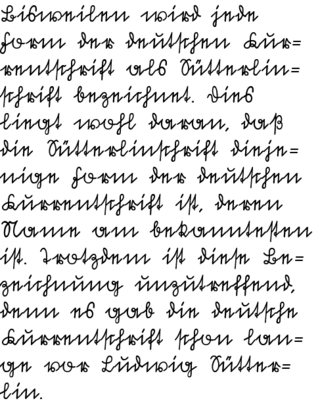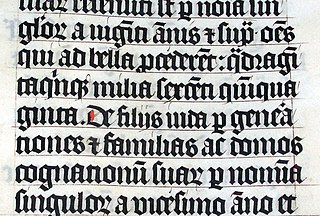A, or a, is the first letter and the first vowel of the Latin alphabet, used in the modern English alphabet, the alphabets of other western European languages and others worldwide. Its name in English is a, plural aes. It is similar in shape to the Ancient Greek letter Alpha, from which it derives. The uppercase version consists of the two slanting sides of a triangle, crossed in the middle by a horizontal bar. The lowercase version can be written in two forms: the double-storey a and single-storey ɑ. The latter is commonly used in handwriting and fonts based on it, especially fonts intended to be read by children, and is also found in italic type.
Epsilon is the fifth letter of the Greek alphabet, corresponding phonetically to a mid front unrounded vowel IPA:[e̞] or IPA:[ɛ̝]. In the system of Greek numerals it also has the value five. It was derived from the Phoenician letter He . Letters that arose from epsilon include the Roman E, Ë and Ɛ, and Cyrillic Е, È, Ё, Є and Э.

A glyph is any kind of purposeful mark. In typography, a glyph is "the specific shape, design, or representation of a character". It is a particular graphical representation, in a particular typeface, of an element of written language. A grapheme, or part of a grapheme, or sometimes several graphemes in combination can be represented by a glyph.

Palaeography (UK) or paleography is the study and academic discipline of the analysis of historical writing systems, the historicity of manuscripts and texts, subsuming deciphering and dating of historical manuscripts, including the analysis of historic handwriting, signification and printed media. It is primarily concerned with the forms, processes and relationships of writing and printing systems as evident in a text, document or manuscript; and analysis of the substantive textual content of documents is a secondary function. Included in the discipline is the practice of deciphering, reading, and dating manuscripts, and the cultural context of writing, including the methods with which writing and printing of texts, manuscripts, books, codices and tomes, tracts and monographs, etcetera, were produced, and the history of scriptoria.

Optical character recognition or optical character reader (OCR) is the electronic or mechanical conversion of images of typed, handwritten or printed text into machine-encoded text, whether from a scanned document, a photo of a document, a scene photo or from subtitle text superimposed on an image.

Calligraphy is a visual art related to writing. It is the design and execution of lettering with a pen, ink brush, or other writing instrument. Contemporary calligraphic practice can be defined as "the art of giving form to signs in an expressive, harmonious, and skillful manner".

Penmanship is the technique of writing with the hand using a writing instrument. Today, this is most commonly done with a pen, or pencil, but throughout history has included many different implements. The various generic and formal historical styles of writing are called "hands" while an individual's style of penmanship is referred to as "handwriting".
Although people in many parts of the world share common alphabets and numeral systems, styles of handwritten letterforms vary between individuals, and sometimes also vary systematically between regions.

Handwriting is the writing done with a writing instrument, such as a pen or pencil, in the hand. Handwriting includes both block and cursive styles and is separate from formal calligraphy or typeface. Because each person's handwriting is unique and different, it can be used to verify a document's writer. The deterioration of a person's handwriting is also a symptom or result of several different diseases. The inability to produce clear and coherent handwriting is also known as dysgraphia.

Sütterlinschrift is the last widely used form of Kurrent, the historical form of German handwriting that evolved alongside German blackletter typefaces. Graphic artist Ludwig Sütterlin was commissioned by the Prussian Ministry of Science, Art and Culture to create a modern handwriting script in 1911. His handwriting scheme gradually replaced the older cursive scripts that had developed in the 16th century at the same time that letters in books had developed into Fraktur. The name Sütterlin is nowadays often used to refer to several similar varieties of old German handwriting, but Sütterlin's own script was taught only from 1915 to 1941 in all German schools.

Cursive is any style of penmanship in which characters are written joined in a flowing manner, generally for the purpose of making writing faster, in contrast to block letters. It varies in functionality and modern-day usage across languages and regions; being used both publicly in artistic and formal documents as well as in private communication. Formal cursive is generally joined, but casual cursive is a combination of joins and pen lifts. The writing style can be further divided as "looped", "italic", or "connected".

Blackletter, also known as Gothic script, Gothic minuscule, or Textura, was a script used throughout Western Europe from approximately 1150 until the 17th century. It continued to be commonly used for the Danish, Norwegian, and Swedish languages until the 1870s, Latvian language until the 1930s, and for the German language until the 1940s, when Hitler's distaste for what he or members of his party claimed was a "Jewish-influenced" script saw it officially discontinued in 1941. Fraktur is a notable script of this type, and sometimes the entire group of blackletter faces is incorrectly referred to as Fraktur. Blackletter is sometimes referred to as Old English, but it is not to be confused with the Old English language, which predates blackletter by many centuries and was written in the insular script or in Futhorc. Along with Italic type and Roman type, blackletter served as one of the major typefaces in the history of Western typography.

Italic script, also known as chancery cursive and Italic hand, is a semi-cursive, slightly sloped style of handwriting and calligraphy that was developed during the Renaissance in Italy. It is one of the most popular styles used in contemporary Western calligraphy.

The D'Nealian Method is a style of writing and teaching handwriting based on Latin script which was developed between 1965 and 1978 by Donald N. Thurber (1927–2020) in Michigan, United States. Building on his experience as a primary school teacher, Thurber aimed to make the transition from print writing to cursive easier for learners.
Rashi script or Sephardic script is a typeface for the Hebrew alphabet based on 15th-century Sephardic semi-cursive handwriting. It is named for the rabbinic commentator Rashi, whose works are customarily printed in the typeface. It was taken as a model by early Hebrew typographers such as Abraham Garton, the Soncino family and Daniel Bomberg in their editions of commented texts.

Getty-Dubay Italic is a modern teaching script for handwriting based on Latin script, developed in 1976 in Portland, Oregon, by Barbara Getty and Inga Dubay with the aim of allowing learners to make an easier transition from print writing to cursive.

Russian cursive is a variant of the Russian alphabet used for writing by hand. It is typically referred to as (ру́сский) рукопи́сный шрифт (rússky) rukopísny shrift, "(Russian) handwritten font". It is the handwritten form of the modern Russian Cyrillic script, used instead of the block letters seen in printed material. In addition, Russian italics for lowercase letters are often based on Russian cursive. Most handwritten Russian, especially in personal letters and schoolwork, uses the cursive alphabet. In Russian schools most children are taught from first grade how to write with this script.

Greek minuscule was a Greek writing style which was developed as a book hand in Byzantine manuscripts during the 9th and 10th centuries. It replaced the earlier style of uncial writing, from which it differed in using smaller, more rounded and more connected letter forms, and in using many ligatures. Many of these forms had previously developed as parts of more informal cursive writing. The basic letter shapes used in the minuscule script are the ancestors of modern lower case Greek letters.

A teaching script is a sample script that serves as a visual orientation for learning to write by hand. In the sense of a guideline or a prototype, it supports the demanding process of developing handwriting skills and abilities in a visual and illustrative way.

The Zaner-Bloser is a teaching script for handwriting based on Latin script as well as a system of penmanship instruction, which originated around 1904 at the Zanerian College of Penmanship in Columbus, Ohio. Charles P. Zaner (1864–1918) and Elmer W. Bloser (1865–1929), originally a Spencerian Method instructor, developed their teaching script with the aim of allowing learners an easier transition from print writing to cursive. The Zaner-Bloser Method first teaches block letters and then cursive in order to enable written expression as quickly as possible and thus develop the ability to write. Material relating to the method of instruction practiced by Zaner and Bloser is still being published by the Zaner-Bloser Company, a subsidiary of Highlights for Children.














